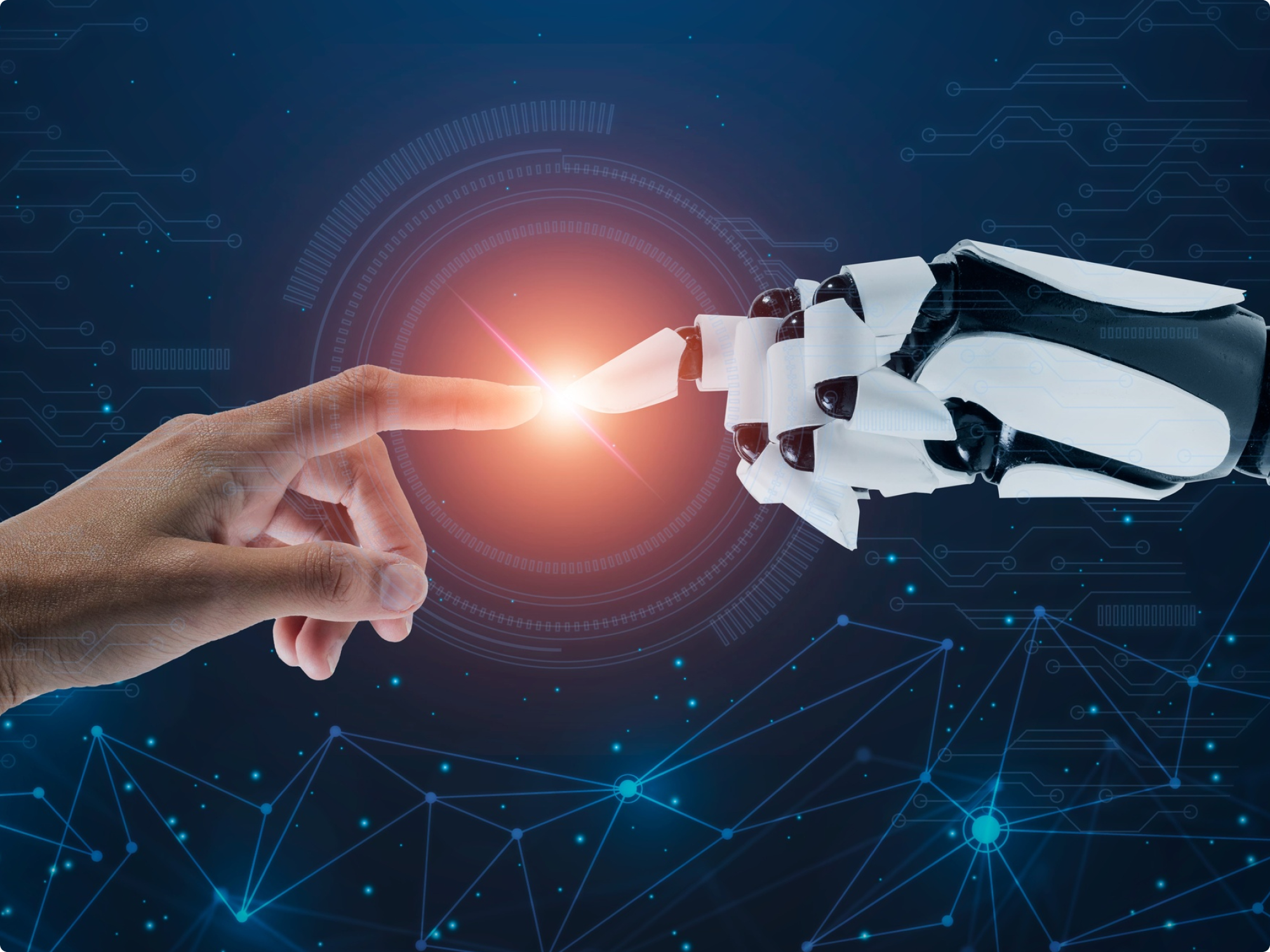In recent months, I’ve found myself contemplating the future and the transformative influence of generative AI in marketing. The question looming large in my mind is whether AI’s integration will merely herald an evolutionary progression or spark a full-blown revolution in the realm of marketing.
When we dissect the essence of marketing, it revolves around three pivotal aspects:
- the distribution channels of marketing;
- the way marketing is created; and
- the core principles of marketing.
Let me work through how generative AI will affect each of them and whether its effects will be evolutionary or revolutionary.
The Distribution Channels of Marketing
Marketing distribution channels have evolved significantly throughout human history, driven by advancements in technology, changes in consumer behavior and shifts in societal norms.
Here’s an overview of how some key marketing channels have evolved over time:
1. Word of Mouth (Prehistoric Era-Present)
Word of mouth is one of the oldest forms of marketing, dating back to prehistoric times when early humans communicated through oral traditions. In ancient civilizations, word of mouth played a crucial role in spreading information about goods, services and experiences within local communities.
With the advent of written language and literacy, word of mouth evolved into more formalized forms of communication, such as personal referrals, testimonials and recommendations.
2. Print Advertising (15th Century-Present)
The invention of the printing press in the 15th Century revolutionized communication and paved the way for modern advertising. Print advertising began with simple text-based announcements in newspapers, pamphlets and posters, gradually evolving into more visually appealing and persuasive formats.
With the rise of mass media in the 20th Century, print advertising became one of the dominant marketing channels, with newspapers, magazines and billboards serving as primary vehicles for reaching consumers.
3. Direct Mail (19th Century-Present)
Direct mail marketing has been around since the 19th Century, when businesses began sending promotional materials directly to consumers’ mailboxes.
Initially, direct mail consisted mainly of catalogs, flyers and coupons, but it evolved over time to include personalized letters, postcards and targeted mailings. With the rise of digital technology, direct mail has adapted to new formats, such as email marketing and electronic newsletters, while still retaining its effectiveness as a targeted marketing channel.
4. Broadcast Media (20th Century-Present)
The 20th Century witnessed the emergence of broadcast media channels, including radio and television, which revolutionized mass communication and advertising.
Radio advertising became popular in the early 20th Century, allowing brands to reach large audiences with audio commercials and sponsorships. The advent of television in the mid-20th Century further expanded the reach and impact of advertising, enabling brands to convey their messages through sight, sound and motion.
5. Digital Marketing (20th Century-Present)
The rise of the internet in the late 20th Century ushered in a new era of marketing, with digital channels offering unprecedented opportunities for reach, targeting and measurement. Websites, search engines, email, social media and mobile apps have become essential components of digital marketing strategies, allowing brands to engage with consumers across multiple touchpoints.
The evolution of digital marketing continues with advancements in technologies such as generative AI, machine learning and augmented reality, which are shaping the future of consumer engagement and brand communication.
6. Social Media Marketing (21st Century-Present)
The emergence of social media platforms in the 21st century has transformed the way brands interact with consumers, enabling real-time communication, user-generated content and influencer partnerships.
Social media has become a powerful channel for building brand awareness, fostering community engagement and driving customer loyalty through targeted advertising and organic content.
7. Mobile Marketing (21st Century-Present)
The proliferation of smartphones and other mobile devices has led to the rise of mobile marketing, encompassing tactics such as mobile advertising, SMS campaigns and in-app promotions. Mobile marketing capitalizes on consumers’ increasing reliance on their devices for information, communication and commerce, offering brands new opportunities to connect with audiences on the go.
Will Generative AI Create New Marketing Channels?
Overall, marketing channels have evolved from primitive forms of communication to sophisticated, technology-driven platforms that span across digital and traditional media. As consumer behavior continues to evolve, marketers must adapt their strategies to take advantage of emerging channels and engage with audiences in meaningful ways.
This has always been the case, and marketers have always adapted or died. As a result, we have evolved to be capable of operating in this new era of AI more than anyone.
This leads to the question: Will the use of generative AI in marketing lead to the creation of new distribution channels?
I couldn’t think of any off the top of my head, so I did the natural thing: I asked AI. Some of its suggestions are below:
AI-Personalized Content Platforms: AI-powered content platforms could emerge, leveraging machine learning algorithms to analyze user data and preferences in real-time. These platforms could dynamically generate personalized content tailored to individual users’ interests, behavior, and demographics, delivering a more relevant and engaging experience.
Voice-Activated Marketing Channels: With the proliferation of voice assistants like Amazon Alexa, Google Assistant, and Apple Siri, voice-activated marketing channels are becoming increasingly important. AI-driven voice technology could enable brands to engage with consumers through interactive voice experiences, such as personalized recommendations, voice search optimization, and voice-enabled shopping.
AI-Generated Virtual Reality (VR) Experiences: As VR technology continues to advance, AI could play a significant role in creating immersive and interactive marketing experiences. AI algorithms could generate hyper-realistic virtual environments, personalized avatars, and dynamic storytelling narratives, allowing brands to engage consumers in unique and memorable ways.
There were more results, which were all good but certainly seemed like evolutions on existing distribution channels vs. completely revolutionary ones.
Final verdict: AI will continue to improve upon and evolve the channels we use.
Using Generative AI to Create Marketing
The second impact of generative AI in marketing is on how assets are created. This too has constantly evolved. Let’s take ghostwriting as an example.
The earliest forms of ghostwriting can be traced back to ancient civilizations, where scribes would write on behalf of rulers and scholars. This practice continued through the Middle Ages, where ghostwriting was often a form of collaboration between authors and scribes.
With the advent of the printing press, the demand for copy increased. Famous authors such as Alexandre Dumas and H.P. Lovecraft employed ghostwriters to help them meet the demand for their writing and maintain their prolific output.
The digital age has brought new opportunities and challenges for ghostwriters. With the rise of the internet and self-publishing platforms, ghostwriters have expanded their services to include blog posts, social media content and e-books. The anonymity of ghostwriting, however, has also led to ethical concerns and controversies.
When I first entered marketing from journalism, I was naively shocked to learn that my job was to primarily write drafts for other people’s bylines. No one ever had any objections to that set up. While ghostwriting was once stigmatized as deceptive or unethical, it is now widely accepted as a legitimate profession. Many authors, celebrities and public figures openly acknowledge their use of ghostwriters, recognizing the value they bring to the creative process.
Yet there is an inherent uneasiness when people think about AI writing the first draft. Why? What is the difference?
I recently watched the movie “Hidden Figures” with my daughter. I loved it. The main character of the film is Katherine Goble Johnson, whose job it was to do math. Her job was ultimately replaced by a computer. There were no moral qualms about a machine doing math. Why are there when it comes to marketing?
Is it because marketing, by its nature, is intended to persuade and influence human beings? And so there is a natural uneasiness to that? No, that can’t be the case, because if we felt that way we would have rejected social media and its algorithms long ago. Though, in retrospect, perhaps we are.
Perhaps there is the fact that many marketers think of themselves as creatives and so in a way hold their craft up as an art and not just a practice to drive monetary benefit. Personally, I like that train of thought. If I am being honest, as a young boy, I dreamed of writing novels, not necessarily ad copy.
And therein may lie the rub — or, said another way, the opportunity — with generative AI in marketing. Perhaps in a world of automated creation, the marketing messages that will resonate rise to the level of art. Perhaps, the tools will free marketers up to become the artists we have always wanted to be?
Final verdict: If AI transforms marketers into artists, that would be revolutionary.
The Core Principles of Marketing
The final area to assess the impact of generative AI in marketing is around these core principles:
- understanding customer needs;
- creating value propositions;
- segmenting and targeting markets;
- integrating marketing communications;
- building and managing brands;
- managing customer relationships;
- measuring performance; and
- adapting to market changes.
These principles guide marketers in delivering value to customers and achieving business goals.
As previously discussed, there are obvious bullets on the above list that AI will automate, which will have a major impact. The first bullet, though, is at the heart of the entire conversation of evolution or revolution. And it raises a question that isn’t directly related to marketing:
Will AI impact us as humans to become more like machines, or will it drive us to become more human?
Not to sit on the fence here, but the reality is that it will probably do a little bit of both. If human beings become more robotic, then an end-to-end, fully autonomous marketing team driven by AI makes sense. The way of reaching them will be programmatic and algorithmic, even if that programmatic approach is customized to each individual person. There is little limit to the information that AI can capture and customize. If a computer continues to become a human appendage, then AI-driven marketing will be the alpha and the omega.
But what if the volume and the noise becomes so loud and the recommendations become so clear and so calculated that human beings do an innate human thing: They do something different? What if it drives us away from our computers and back into the world? To a hunger for the physical, the experience, the authentic? I guess if that is the case, and that is where the opportunity exists for marketing, then companies would think of ways of injecting AI into that.
So that is why I think the use of generative AI in marketing is a revolution. I do not think there is an evolution past AI. I think it is the future, which would certainly make it revolutionary.



